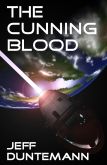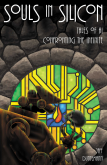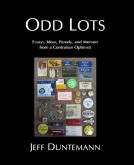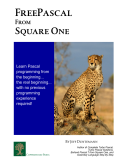I’ve been tinkering with a recast of my 1993 book Borland Pascal 7 From Square One since 2008, for the excellent FreePascal compiler. One reason I set the project aside after a year or so is that I wanted to see if the Lazarus IDE would mature a little. I had originally planned to use the text-mode IDE bundled with the compiler, but it had what I considered dealbreaker bugs. Besides, if Lazarus became usable, I could create a tutorial for it as well. Lazarus is now at V1.2.2 and (at least to the limits of my tests so far) works beautifully. I’ve gone back to the FreePascal From Square One project, yanking out all mention of the text-mode IDE, and deliberately tilting it toward a prequel tutorial for a future book on OOP and creating GUI apps in Lazarus, Delphi-style.
One of my goals with the project has been to create a single PDF that can be used as both an ebook and a print image. I’ve experimented with implementing it as an epub, with disastrous results. Layouts containing lots of art just don’t work as reflowable text. On the other hand, PDF images are painful to read and navigate unless the reader device can render a full page legibly. Back in 2008, we didn’t even have iPads yet, and the target display for my PDF ebooks was my 2005-era IBM X41 Tablet PC. You could read the PDF…barely. I spun a couple of page layouts that used smaller pages and larger fonts. They were readable, but looked bizarre (almost like children’s books) when printed to paper.
I left it there for some years. Come 2010 we met the iPad, with the multitude of Android slabs hot on its heels. Displays improved radically. I got an Asus Transformer Prime in 2012, and found the 1280 X 800 display startling. I took the page design that I had originally created for my X41 and tweaked it a little. The page size is A4 rather than letter or standard computer trim, for three reasons:
- Whereas some POD houses can give you computer trim, sheets aren’t readily available at retail and thus can’t be printed at home.
- A4 paper is the default paper size in Europe, where I suspect that most of my readers will be. It can be had in the US from the larger office stores, and modern laser printers will take it. Lacking A4 paper, the book can be printed to letter sheets with only a little bit of reduction.
- A4 paper is taller and narrower than letter, and maps a little better to the wide-format displays that dominate the non-iPad tablet segment.
The layout still looks odd to me. Half a century of reading has made me used to fine print, so the larger type jars a little. However, the layout has plenty of room for technical art and screenshots, and full pages read very well on the Transformer Prime. (This is not true on the much smaller Nook Color.)
With print publishers struggling terribly, I’m guessing that this is one possible future for technical publishing: new layouts that allow the same PDFs to be either printed or rendered as ebooks. More and more specialty books that I buy are POD (I know how to spot them) and the customary high prices on computer books leave plenty of margin to make POD copies profitable.
You can help me out a little. The ebook is far from finished, but I’ve posted the PDF here. I’d be curious to know how legibly it renders on other tablets, particularly those smaller than 10″ but with 1280 X 800 or better resolution. Again, it’s not a complete book and there are plenty of typos and layout glitches in it. What I want to know is whether or not technical readers will find it usable on modern tablets. Thanks in advance for any feedback you can provide.




















